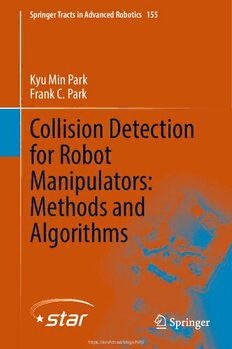
Collision Detection for Robot Manipulators: Methods and Algorithms PDF
133 Pages·2023·2.599 MB·English
Most books are stored in the elastic cloud where traffic is expensive. For this reason, we have a limit on daily download.
Preview Collision Detection for Robot Manipulators: Methods and Algorithms
Description:
This book provides a concise survey and description of recent collision detection methods for robot manipulators. Beginning with a review of robot kinodynamic models and preliminaries on basic statistical learning methods, the book covers fundamental aspects of the collision detection problem, from collision types and collision detection performance criteria to model-free versus model-based methods, and the more recent data-driven learning-based approaches to collision detection. Special effort has been given to describing and evaluating existing methods with a unified set of notation, systematically categorizing these methods according to a basic set of criteria, and summarizing the advantages and disadvantages of each method. This book is the first to comprehensively organize the growing body of learning-based collision detection methods, ranging from basic supervised learning methods to more advanced approaches based on unsupervised learning and transfer learning techniques. Step-by-step implementation details and pseudocode descriptions are provided for key algorithms. Collision detection performance is measured with respect to both conventional criteria such as detection delay and the number of false alarms, as well as criteria that measure generalization capability for learning-based methods. Whether it be for research or commercial applications, in settings ranging from industrial factories to physical human–robot interaction experiments, this book can help the reader choose and successfully implement the most appropriate detection method that suits their robot system and application.
See more
The list of books you might like
Most books are stored in the elastic cloud where traffic is expensive. For this reason, we have a limit on daily download.
